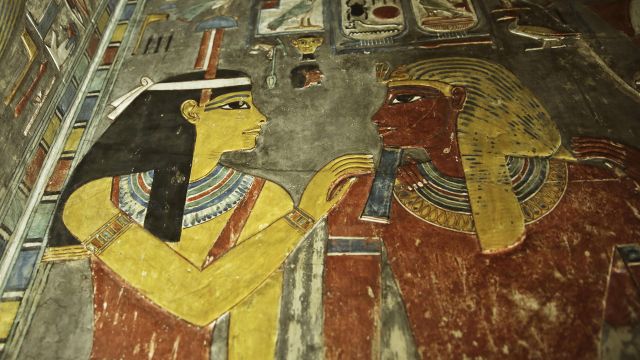-
Tips for becoming a good boxer - November 6, 2020
-
7 expert tips for making your hens night a memorable one - November 6, 2020
-
5 reasons to host your Christmas party on a cruise boat - November 6, 2020
-
What to do when you’re charged with a crime - November 6, 2020
-
Should you get one or multiple dogs? Here’s all you need to know - November 3, 2020
-
A Guide: How to Build Your Very Own Magic Mirror - February 14, 2019
-
Our Top Inspirational Baseball Stars - November 24, 2018
-
Five Tech Tools That Will Help You Turn Your Blog into a Business - November 24, 2018
-
How to Indulge on Vacation without Expanding Your Waist - November 9, 2018
-
5 Strategies for Businesses to Appeal to Today’s Increasingly Mobile-Crazed Customers - November 9, 2018
Egypt Confirms Theory That Hidden Chambers Could Lie Behind King Tut’s Tomb
Egyptian Antiquities Minister Mamdouh Eldamaty confirmed on Monday that archaeologists examined Tutankhamun’s tomb and found evidence of two hidden chambers, citing markings on the northern and western walls similar to those discovered at the entrance to King Tut’s tomb in 1922, according to Discovery News. “I think since Nefertiti had been buried a decade before, they remembered that tomb was there and they thought, well, perhaps we can extend it”, he said.
Advertisement
In August, Reeves published a paper arguing for the presence of two hidden chambers in Tutankhamun’s tomb; his theory developed after viewing high-resolution scans of the tomb’s walls, made by conservation company Factum Arte; these scans reproduced the walls’ texture in unprecedented detail, revealing previously unseen anomalies beneath the plastered surfaces.
The mummy of Egyptian Queen Nefertiti may be found in a hidden chamber behind King Tut’s burial room.
These features are hard to capture with the naked eye, he said.
According to Reeves, the boy king, who died unexpectedly at 19, was buried in a rush in an underground burial chamber that was probably not intended for him.
In contrast to popular scholarship, which says that the painting located on the northern wall of Tutankhamun’s tomb shows king Ay doing the ritual for Tutankhamun – Dr Reeves believes that the picture depicts Tutankhamun himself completing a death ritual for Nefertiti.
Nefertiti was known throughout ancient Egypt for her beauty, and was the wife of the pharaoh Akhenaten, the same that introduced one of the earliest forms of monotheistic religion.
“Akhenaten’s family is full of secrets and historical issues that have yet to be resolved”, el-Damaty said.
While inscriptions in tombs provide a few information, they are not always helpful in clarifying a pharaoh’s lineage. But they can’t just knock it down; they had to find another way to see through it. These features include ceilings, wall paintings, and the location of the magic bricks that contain amulets, which protect the deceased against the enemies of the god Osiris. Reeves must now figure out how to get behind it without destroying the artifact.
“If we find something extra, even one small new inscription would be a great bonus, it could change everything”, said Reeves.
Advertisement
He said he hopes it is Nefertiti, but added that whatever is hiding will be “an important discovery”. Tourism at Red Sea beach resorts is rebounding after years of turmoil following the 2011 ouster of President Hosni Mubarak, said Zazou, but otherwise “tourism is suffering tremendously”.





























